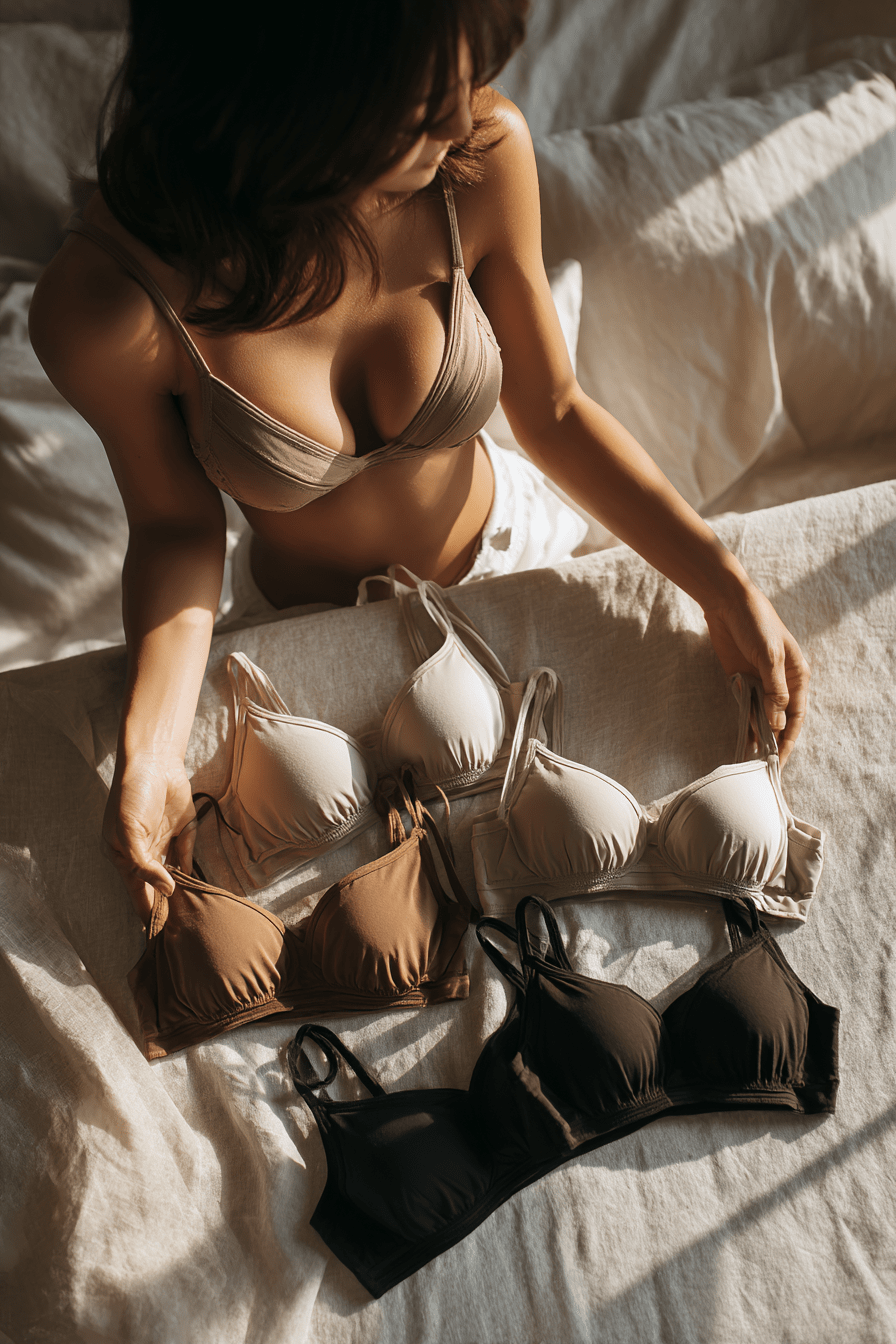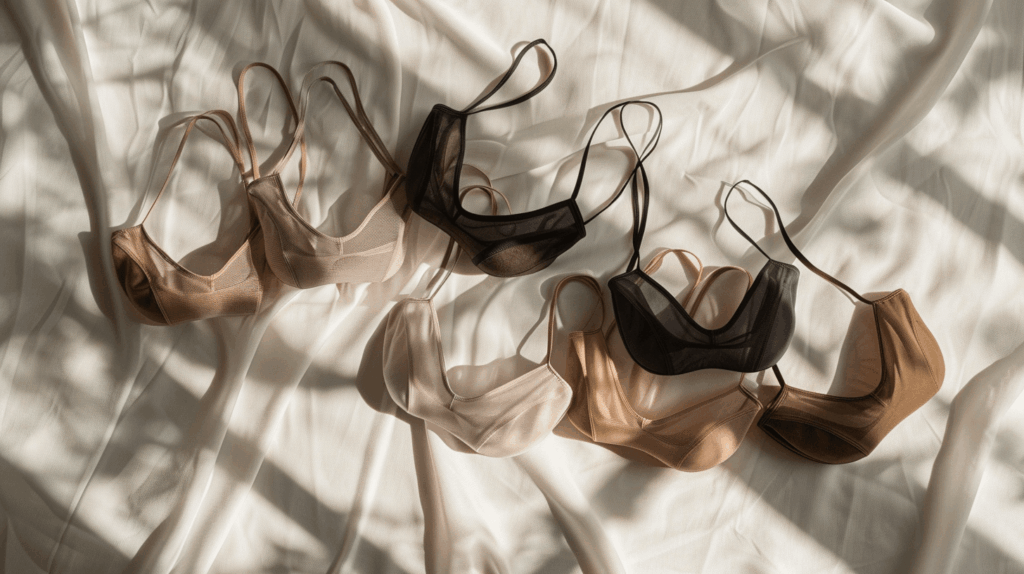
If you’ve ever wondered if your bra is truly good for you—not just in terms of comfort or style, but for your actual health—you’re definitely not alone. As conversations around wellness, non-toxic living, and self-care have grown, so has a new curiosity about what we put on our bodies every single day. At Daughters of Sunday, this question is at the heart of everything we do: What bras are really good for breast health? Let’s break down what science, tradition, and common sense have to say—and how you can make choices that genuinely support your body.
The Connection Between Bras and Breast Health
Let’s start with the basics. For years, bras have been wrapped up in myths, urban legends, and sometimes even a little bit of guilt. Maybe you’ve heard scary stories about underwires “blocking lymph flow,” or rumors that sleeping in a bra will prevent sagging (or, the opposite: cause it!). The reality is a little more nuanced.
Here’s what doctors and researchers actually say:
- There’s no proven link between wearing a bra (or not) and an increased risk of breast cancer. Several large studies, including one published in Cancer Epidemiology, Biomarkers & Prevention, found no connection between bra use, bra type, or underwire bras and breast cancer risk.1
- Lymph flow is important for your immune system and overall breast health. While some claim underwire bras can impede this, there isn’t solid research proving it. However, very tight bands, wires, or ill-fitting bras can cause discomfort and sometimes mild swelling, so comfort and fit matter.
- Comfort and skin safety are key. Materials that cause irritation, sweating, or allergic reactions can lead to rashes or even infections, especially under the bust. Non-breathable synthetics or chemically-treated fabrics can increase risk for sensitive skin.
So, what does this mean for you?
Ultimately, breast health isn’t about whether or not you wear a bra—but about how your bra fits, what it’s made from, and how it feels to you.
Healthiest Bra Materials (And What to Avoid)
What you put on your skin matters. Your breasts (and underbust area) have some of the thinnest, most sensitive skin on your body. This is why so many women are starting to ask what’s actually in their bras.
The Best Fabrics for Breast Health
- OEKO-TEX® Certified Fabrics: This independent certification means your fabric is tested for hundreds of harmful substances. OEKO-TEX is not a material, but a promise—that your bra is free from known toxins, irritants, and residual chemicals. At Daughters of Sunday, all our planned fabrics are OEKO-TEX certified, because your health is our baseline.
- Organic Cotton: Natural, breathable, gentle. If you have extremely sensitive skin or allergies, 100% organic cotton is hard to beat. Look for GOTS certification for true organic status.
- Bamboo and Modal: Plant-based, soft, and moisture-wicking. Bamboo is naturally hypoallergenic and great for hot climates.
- High-Quality Microfiber/Nylon (Certified): Not all synthetics are bad—some OEKO-TEX-certified microfibers offer breathability and silky comfort, especially in wireless and seamless bras. The key is the certification and quality, not just the material name.
Fabrics and Features to Be Careful With
- Heavily Treated Synthetics: Low-quality polyester, non-certified nylon, and acrylic blends often contain chemical finishes (anti-odor, stain-resistant, etc.) that can leach or cause skin irritation.
- Foam Cups with Unknown Fillers: Cheap foams can contain flame retardants or residual chemicals.
- Metal Underwires with Exposed Ends: If your wire pops out, you know the pain! These can cause micro-abrasions or even minor infections if the skin breaks.
Bottom line:
Look for bras made from materials you’d feel safe wearing all day, every day—preferably those you can pronounce, and ideally with visible certifications like OEKO-TEX, GOTS, or even Bluesign.
Best Bra Designs for Breast Health
Now that we know what materials to trust, let’s talk about the actual structure and fit.
1. Wireless Bras and Bralettes
The wireless revolution is real. Many health-conscious women (and their doctors!) now recommend wireless bras for everyday wear. Here’s why:
- They put less pressure on the chest wall and rib cage.
- There’s no risk of underwire poking or pinching breast tissue.
- Wireless designs (when supportive enough) allow for natural movement and lymphatic flow.
At Daughters of Sunday, we make exclusively wireless bras—designed to offer gentle support with clean lines and no digging, ever.
2. The Importance of Fit
Even the healthiest fabric can’t save you from a bra that’s too tight or too loose. Here’s what to look for:
- Band: Should be snug, but you should fit two fingers underneath comfortably.
- Cups: No spillage, no gapping. For non-padded bras, the fabric should gently hug, not flatten or distort.
- Straps: They should not dig into your shoulders or slip off.
Pro tip: If you find red marks or experience skin indentations, try adjusting your size or fit style.
3. Breathability and Minimalism
- Breathable fabrics (cotton, bamboo, modal, high-quality microfiber) prevent sweat and irritation, especially for sensitive skin or during hot weather.
- Seamless construction and minimal hardware reduce friction and breakouts, especially under the arms or bust.
What About Support?
This is where individual needs and body types matter most.
- Smaller busts: Many women with A or B cups find that wireless bralettes offer plenty of comfort and support, especially if the band is snug and the fabric has a bit of stretch.
- Larger busts: You may want wider bands, molded (but soft) cups, or designs with internal slings for gentle lift. Avoid super-tight compression or heavy foam unless you need it for sports.
Remember, support isn’t about flattening or squeezing your breasts. It’s about holding you comfortably in place while allowing for healthy movement and circulation.
Real-Life Tips for Choosing a Healthy Bra
1. Measure Yourself Properly
The best bra for your health is one that fits you now, not two years ago. Your size can change with weight shifts, hormonal cycles, or life stages (pregnancy, postpartum, menopause).
- Use a flexible tape to measure underbust and fullest bust.
- Check your fit every 6–12 months or after any major change.
2. Read the Label (and the Fine Print)
Look for visible certifications (OEKO-TEX, GOTS), and steer clear of mystery “proprietary” blends that don’t list their ingredients.
3. Try Before You Commit
If possible, try your bra on for a few hours at home (with tags on!). Move around, stretch, sit at your desk—how does it feel at 4pm?
4. Rotate Your Bras
Just like shoes, bras need a break. Rotating helps maintain elasticity and hygiene, extending the lifespan of each piece.
5. Wash Gently, Air Dry
Gentle hand washing and air drying can prevent breakdown of elastic and keep toxic detergents from soaking into the fabric.
how we want to live—and how we want our customers to feel.
FAQs About Bras and Breast Health
Are wireless bras healthier?
In most cases, yes! Wireless bras reduce pressure on breast tissue and are less likely to cause skin irritation or restrict movement.
Which type of bra is best for daily use?
A well-fitting wireless bra made from breathable, certified materials is ideal for most women.
Do bras prevent sagging breasts?
There’s no scientific proof that wearing a bra will prevent sagging (ptosis) in the long run—genetics, age, and lifestyle play bigger roles.
Should I sleep in a bra?
Most experts say it’s a personal choice. If you do, choose a very soft, wireless, and breathable style.
What is the healthiest bra material?
OEKO-TEX certified, organic cotton, bamboo, and high-quality microfibers are all excellent, especially for sensitive skin.
Final Thoughts — Listen to Your Body
There’s no “one perfect bra” for every woman, every day. But there are smart, caring choices you can make—whether it’s choosing a wireless style, reading the fabric label, or simply being honest about what feels good on your skin. Trust your instincts. You deserve comfort, support, and peace of mind from the first layer you put on each day.
If you’re curious to learn more about non-toxic bras, how to find your true fit, or want early access to our wellness-first collections, join the Daughters of Sunday community here. We’re here to make your bra drawer a softer, safer, more soulful place—one healthy choice at a time.
This post is for informational purposes and is not medical advice. Please consult your healthcare provider for personalized recommendations.


